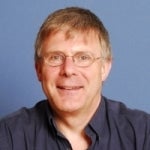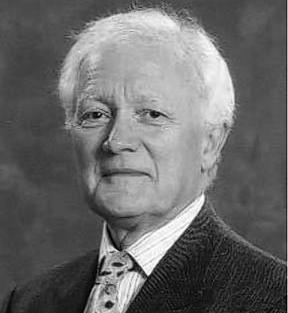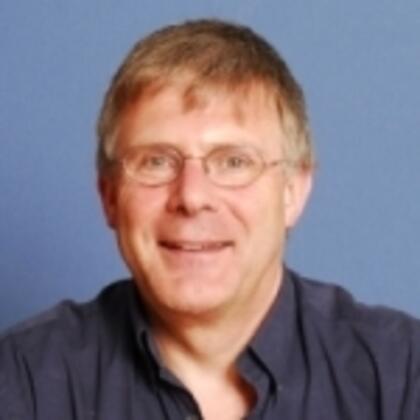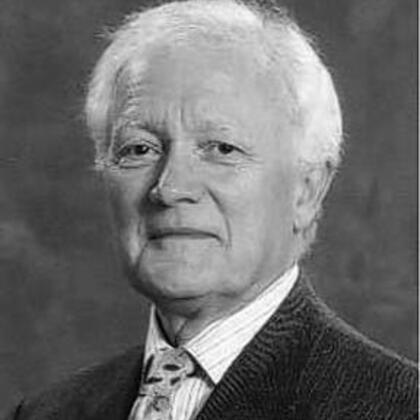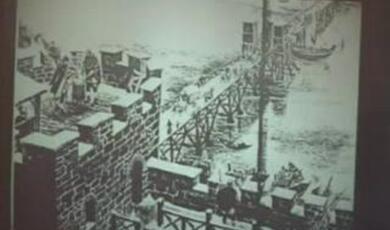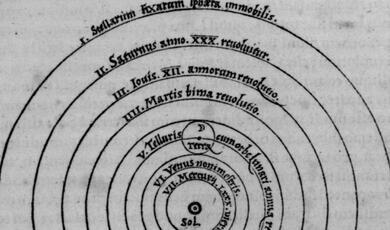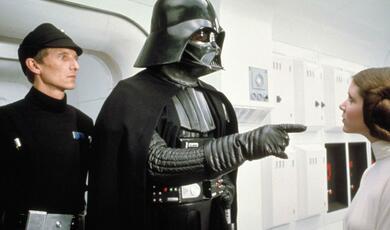Robert Hooke: Tercentennial Studies
Share
- Details
- Transcript
- Audio
- Downloads
- Extra Reading
Professor Michael Cooper, City University and Professor Michael Hunter, Birkbeck, University of London An event to mark the publication of the papers delivered at the Robert Hooke tercentennial conference covering a wide range of aspects of Hooke's life and work.
Download Transcript
Robert Hooke: Tercentennial Studies
Professor Michael Cooper and Professor Michael Hunter
Professor Michael Cooper, City University
I would like to welcome everybody here to Gresham College this evening, and to say how gratifying it is to see so many people coming here to hear and see things related to Robert Hooke. My name is Michael Cooper. I am one of the two editors of the book which is here this evening. It gives me great pleasure really to say some words of thanks to the organisations and the individuals who have done so much over the last few years to support the work on Robert Hooke that has been done.
The book that is published today is compiled from papers that were presented at the Robert Hooke Conference at the Royal Society in 2003, 300 years after his death. That conference could not have taken place without the financial and other support of three organisations: in the first place, Gresham College, where Hooke was Professor of Geometry. They have supported all the activities on Hooke for the last ten years, through a succession of Provost s, and I am grateful to all of them and to the Chairman and the Council of Gresham College for their financial and moral and other kinds of support, which although are not seen are essential to an activity such as the one we are celebrating this evening.
Then there is the Royal Society, who also contributed towards the conference by making their facilities available and for providing for the book various pieces of evidence of what Hooke had done.
The Royal Academy of Engineering was also a supporter and a sponsor of the conference, and we are grateful to the Royal Academy of Engineering as well.
A word about the book itself: it has been a pleasure for Michael Hunter and myself to work with the 16 contributors to the volume. What has struck me about the contents of the book is its diversity. Hooke has been approached from many different directions by various specialists, and together I think they throw light on Hooke which not only shows him to have been a significant figure in 17 th Century science, more so than has been generally thought, but it has also shown that there is a lot more to be done in order to be able to understand him.
Another aspect of the book that I have found particularly interesting is the fact that it contains papers by people who have actually taken it upon themselves to do the sort of things that Hooke did, to follow his experiments, to repeat them, and to try to understand how he came to the conclusions he did, and by carrying out these experiments, I think one does understand far more about his mechanical sense of the way the universe worked.
Incidentally to that, I also believe that there is a lot of useful education for schools here if they could only take it upon themselves, as part of the teaching of science, to perform some of the rather simple experiments that the 17 th Century scientists performed. I think that would lead to a greater understanding of what they did, why they did it, and why it was important to do it.
We are astonished to see here tonight the Hooke manuscript, which has received a lot of attention in the press. It has come to light recently. It will be auctioned by Bonhams, and we will hear a little bit more about that later.
The appearance of this manuscript has given me hope that Hooke’s survey books, which he kept meticulously and daily during his years as City Surveyor, from 1666 to 1674, might also come to light. He refused to hand them in to the Corporation of London at the end when he was ordered to do so. I can think of one or two good reasons why he refused to hand the books in. The two other surveyors handed theirs in, and they were transcribed in the 17 th Century, and facsimiles of the transcripts were published by the London Topographical Society in the 1960s and 1970s, but Hooke’s books were never handed in and are lost. It gives me a faint glimmer of hope that they might come to light soon. If they do, they are likely to be far more substantial in bulk than the manuscript that has just come to light, and although they will tell us a lot about London and its rebuilding, I think they will also tell us things about Hooke that we have not yet fully understood.
So on that optimistic note, I would like to end by introducing the next speaker, Michael Hunter, my co-editor. Through various subtle ways over the last few years, Michael has guided me into the proper way of looking at history and even writing about it, and if any historians read what I have written and feel uncomfortable, that is nothing to the discomfort they would have felt had I not been under Michael Hunter’s influence! So I personally acknowledge the help that Michael has given me in implicit ways through the last five years.
Professor Michael Hunter, Birkbeck, University of London
Thank you. You have covered most of the points I think that need to be made about the book. I would just add a couple of small points, and then I also might just say a very brief word about the new manuscript.
First, I think that the book illustrates the sheer range of Hooke’s activities, and one theme that has quite a lot of attention in it is Hooke’s architectural work. There are three important essays on different aspects of that within the book. In fact, within the recent past, there has been a further contribution on Hooke’s architecture of a more speculative, and perhaps slightly more spectacular kind, in an essay by Giles Worsley, which has suggested that Hooke might have been the architect of a number of really major buildings in late 17 th Century England, including such buildings as Petworth House, which I have to say I looked at with new eyes the last time I visited it in the light of the article. It is very sad to have to record that the author of the article, Giles Worsley, died tragically and very young, in his forties, just at Christmas time, and so that was one of the very last of his contributions to scholarship.
The other thing I was going to say about the book echoes a point that we made in the introduction about the direction in which Hooke studies should now be going. Having at one point believed that Hooke’s interests were so wide that it was impossible for anyone to synthesise them, it was partly for that reason that, a few years ago, Mike Cooper, Jim Bennett, Lisa Jardine and I published a joint book on Hooke, in which we each took a section and dealt with it separately. I have now become slightly more optimistic that some great synthesis may be possible, and I think it would be a synthesis of the kind that, as we suggest in the introduction to the book, was foreseen by Louise Paterson, one of the pioneering Hooke scholars in the post-war years, who thought that what was needed was a view of Hooke’s synthesis which would see the universe not only as a self-regulating mechanism, but also as an evolving one, thereby bringing together his geological interests with the cosmological interests which he shared with Newton.
I just briefly wanted to mention the Bonhams manuscript. There are a handful of other important manuscripts of Hooke which deserve attention, perhaps particularly the main Hooke manuscript at the Royal Society, Classified Papers 20, which still has a treasure trove of material that has never been properly exploited. But the Bonhams manuscript is a real eye-opener partly, as Mike has already indicated, because of the amazing fact that such an important document should come to light so unexpectedly in the 21 st Century, and it gives us hope that there are many more such treasures hidden in attics awaiting discovery.
It also is an extraordinary document because of some of the things that it says and aspects of Hooke that it throws light on, and as someone who is interested in Boyle as well as Hooke, and in their mutual relationship, I was very interested by the tiny little nuggets of information it contains about Hooke’s attitude towards his mentor, Boyle, who had given him his first scientific job, but who, like everyone else, Hooke seems to have had a certain resentment of. One of the most memorable, very short passages in this new document is where Hooke comments on a relatively well-known work by Boyle, his General Heads for the Natural History of a Country, which was read out at the Royal Society in 1666, and Hooke writes “stolen from me”!
I think on that note I should pass over to Felix Fryer, who is going to tell you a bit more about the manuscript!
Felix Fryer
I am a very new convert to the Hooke church, and I am really not very qualified, apart from the fact that last September, I drifted into the office of Bonhams, where from time to time I act as consultant, sat down at my desk, and reached to the shelf behind me, and there was this manuscript. I opened it out, and I think the first words that hit my eyes were “Vice-President, Sir Christopher Wren, in the chair”, then Newton, Boyle…
I would very much like to thank Michael (Hunter) for his help when I was preparing the catalogue. I should add that it is entirely my responsibility – he just corrected one or two howlers. One particular howler which I have actually put his name to, which I would like to correct in public here, is that I referred to Sir Hans Sloane’ draft minutes, which are actually quite like those in the British Library, and I say it is Sloane manuscript 3342, and in fact, as Michael correctly told me originally, it is manuscript 3341! The reason actually I bring this up, is because, having written the catalogue, an sent the catalogue off to press, I toddled along to the British Library last Tuesday to have a look at it. I think this isn’t generally known, but first of all it is, as I said, very like Sloan’s handwriting, his draft minutes, and it says “entered” in I think the same hand – I’ve got to check – as this does, but quite a lot of the entries are by Robert Hooke. In fact, Hooke seems to have taken over from Sloane and kept the minutes for him, so perhaps someone will write this up at some point. He has also added bits where he read two letters and so Hooke himself has, you know, written out what he entered. Anyway, that’s that, just a small discovery.
Finally, I went into Bonhams today, and there were some interesting volumes, some funny drawings of London by Robert Hooke…no, I don’t think they are of any importance!
John Smedley, Publishing Director, Ashgate
It is a pleasure, on behalf of Ashgate, to be able to publish a book like this that contributes so well to our list and history of science and early modern history, and secondly, I would like to say thank you to the two editors. The work of editors putting together a volume is not always appreciated. It can be very hard work corralling the contributors and making them confirm to the specifications that publishers demand, and they did it admirably.
© Professor Michael Cooper and Professor Michael Hunter, Gresham College, 6 March 2006
This event was on Mon, 06 Mar 2006
Support Gresham
Gresham College has offered an outstanding education to the public free of charge for over 400 years. Today, Gresham plays an important role in fostering a love of learning and a greater understanding of ourselves and the world around us. Your donation will help to widen our reach and to broaden our audience, allowing more people to benefit from a high-quality education from some of the brightest minds.


 Login
Login
